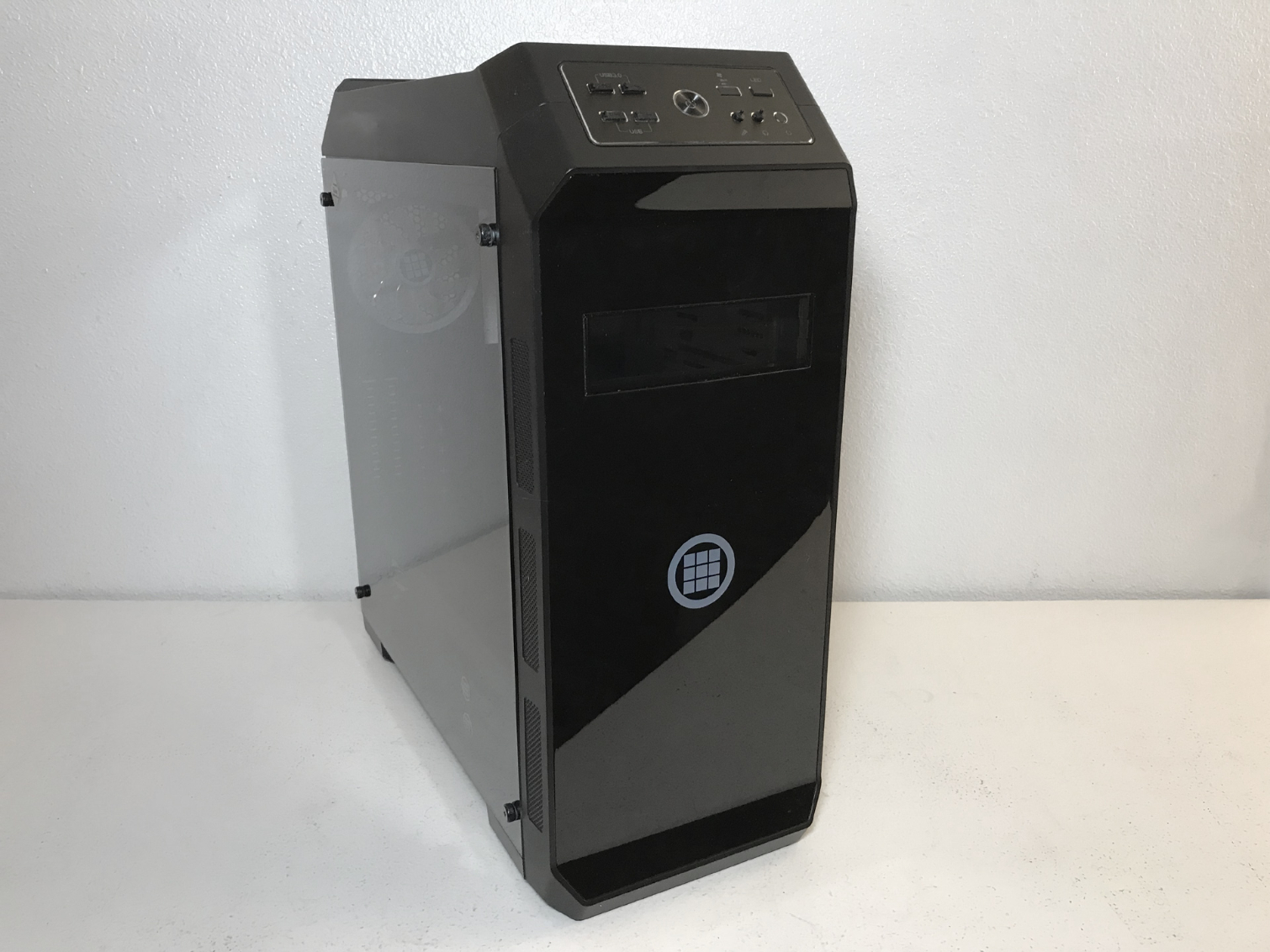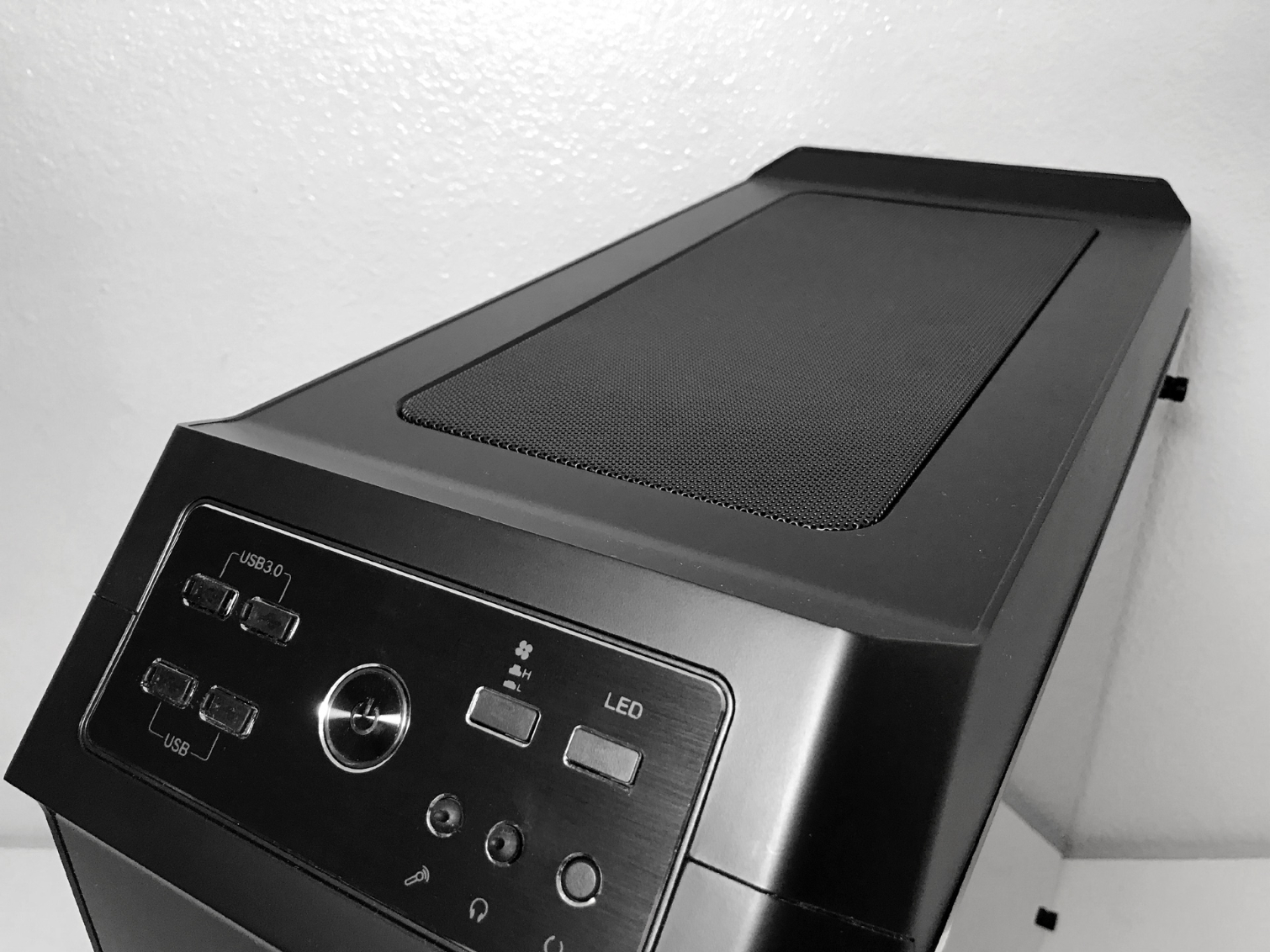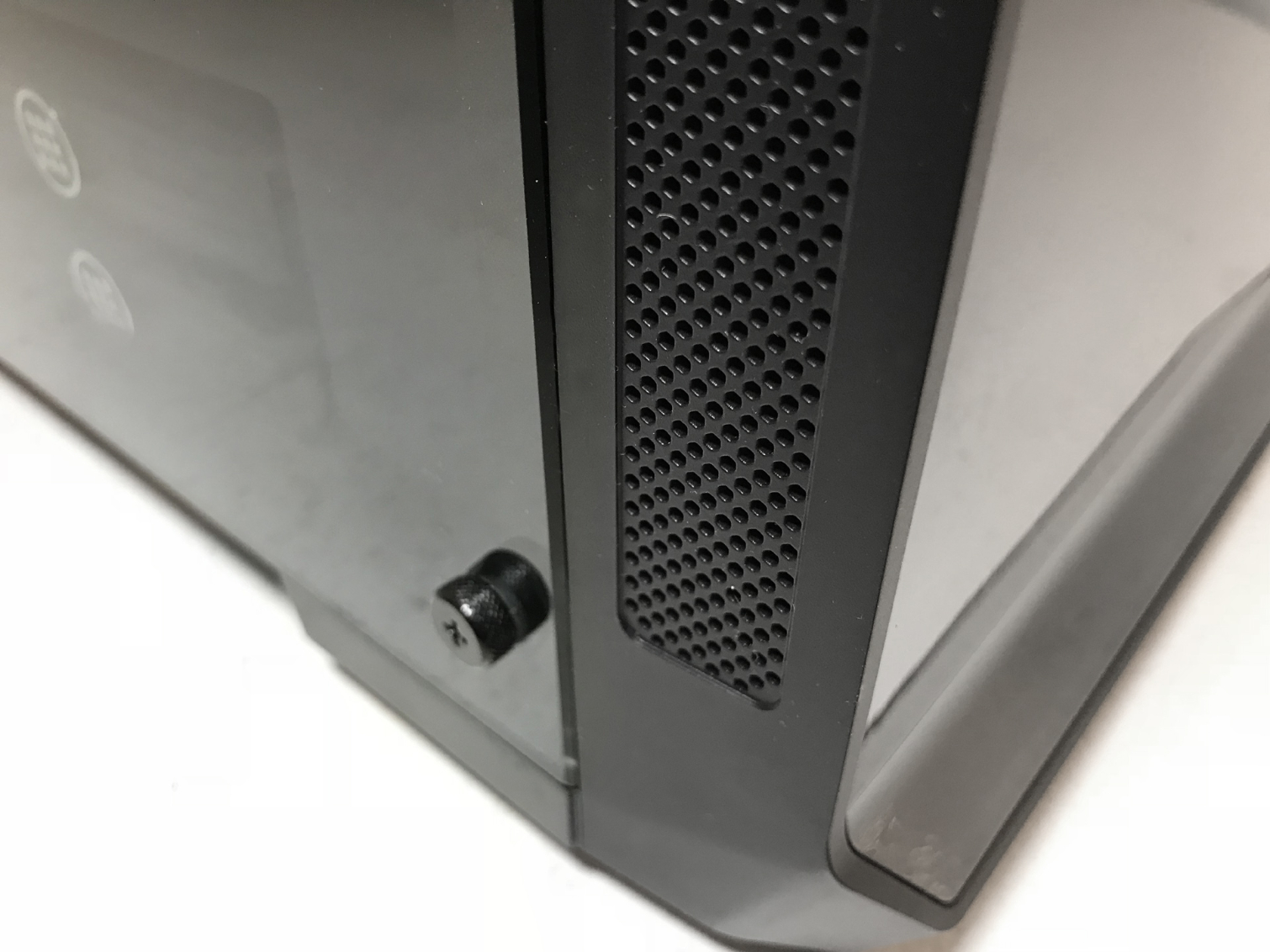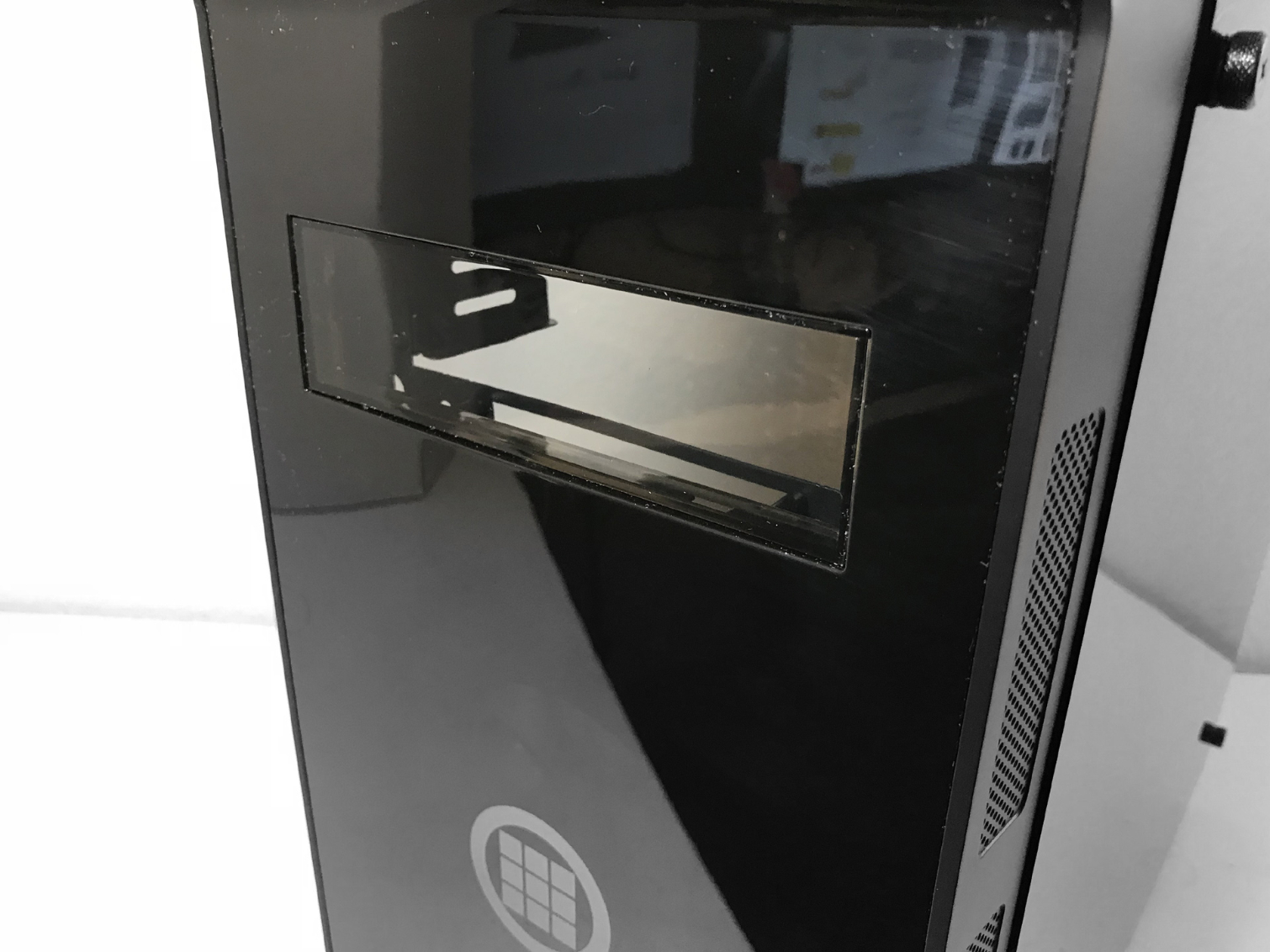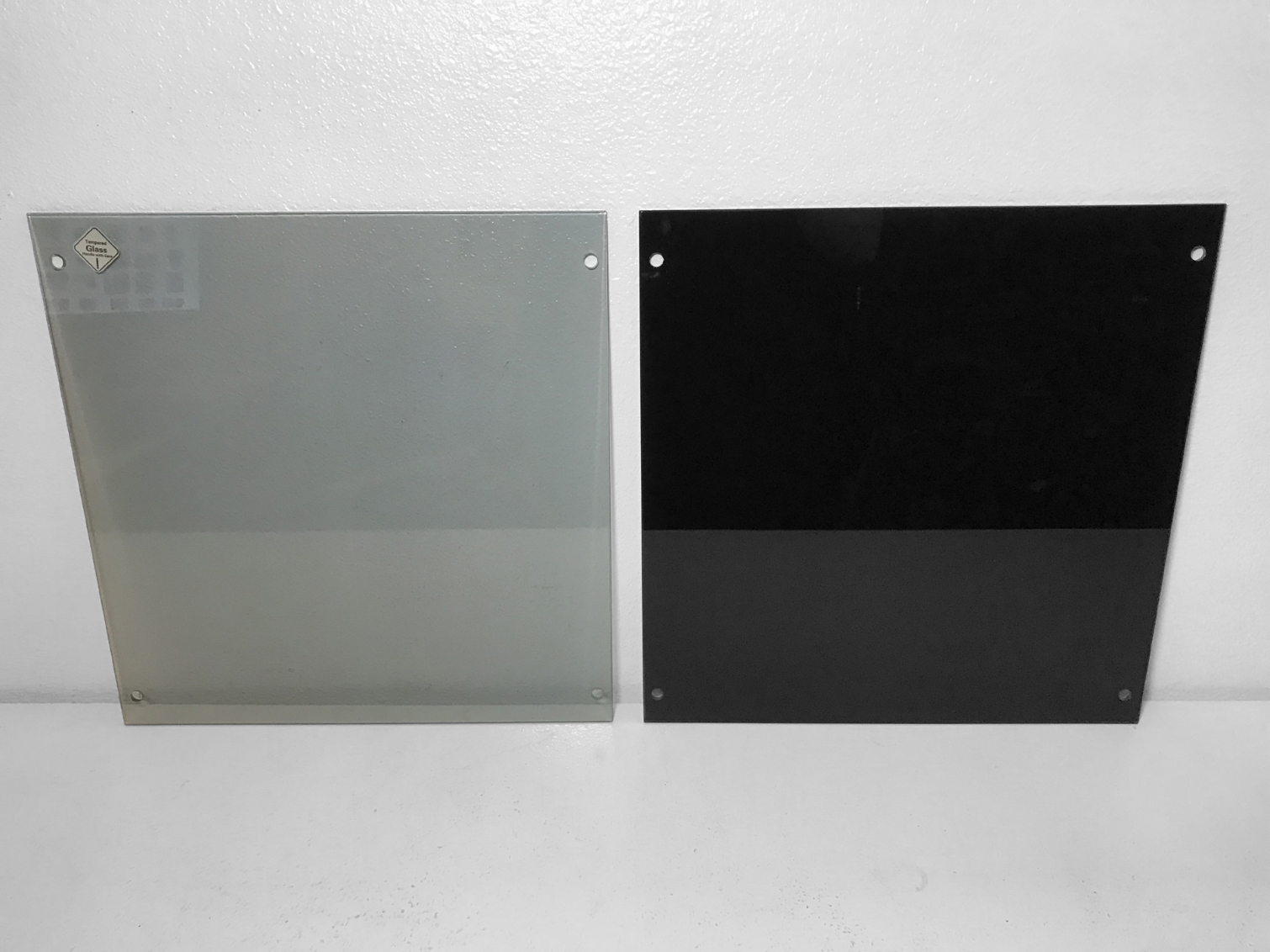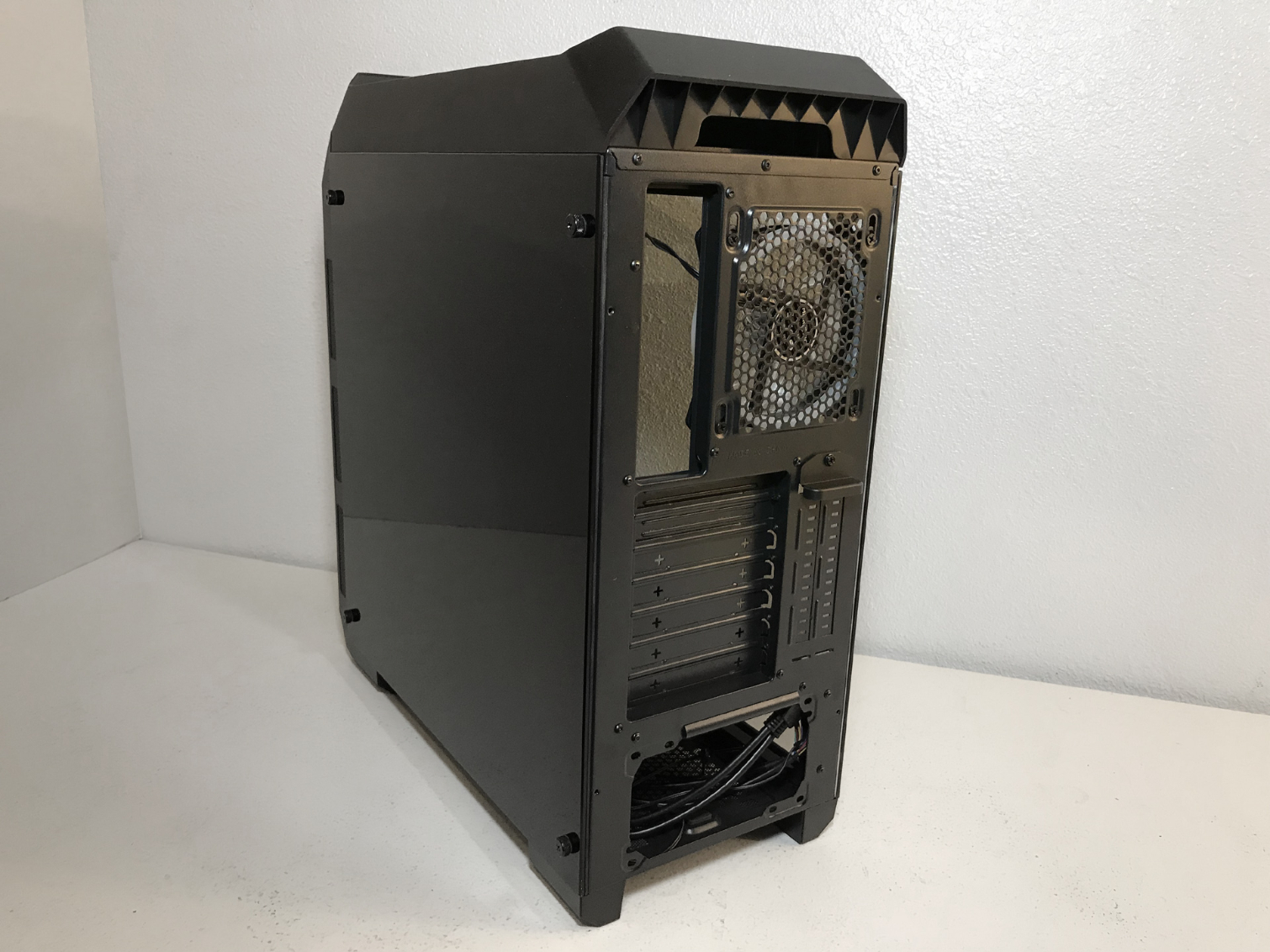Tom's Hardware Verdict
In the end, the Master M400 is a decent chassis but there are many mid-tower cases out there with more features, better build quality and a much better value at this price point.
Pros
- +
Strong thermal performance
- +
Three LED-Lit fans included
- +
Vertical GPU mount
Cons
- -
Pricier than competitors
- -
Drive bay lighting
- -
Terrible fan wiring
- -
Knock out slot covers
- -
Cable pass through covered by drives
- -
See-through front panel 5.25 cover
Why you can trust Tom's Hardware
Features & Specifications
Elder geeks may recognize the Micronics brand from motherboard lore, but the Korean former distributorship has survived all the mergers and acquisitions of its former U.S. partners to develop its own brand of PC power supplies, AIO CPU coolers, AIO computer chassis, and standard computer cases. One of the latter is the company's $95 Master M400, which is not to be confused with Cooler Master's own line of MasterCase chassis.
Featuring two tempered glass side panels, a slick glossy finish and support for up to ATX motherboards and long graphics cards, the Master M400 may seem like the perfect mid-tower chassis...until you take a closer look. Though this case has good thermal performance and a few nice touches, competitors such as the Riotoro CR500 offer similar performance and better build quality for a lot less money.
The M400 is constructed of steel, plastic, and tempered-glass that is painted black inside and out. Slightly larger than the average mid-tower ATX case, it measures 520 x 203 x 470mm (HWD) and weighs just over 14lbs. Much of the top panel is covered by a metal-mesh filter, directly under which are mounting locations for two 120mm fans, all-in-one coolers and radiators.
The area between the top panel and the front panel is slanted at a 45° angle. This 3.5 x 7" space is home to two USB 3.0 and two USB 2.0 ports, a fan control button, LED controller, headphone and microphone jacks, a hard drive activity LED, and a reset and power button. The company includes anti-dust plugs for each port to prevent debris from accumulating in the ports when the computer is not in use. Directly behind the front fascia you will find mounting locations for two 120mm intake fans. Ventilation into the chassis is provided by a row of vents that runs down both sides of this front face.
The M400 is equipped with a single 5.25" mounting location for optical drives or drive bay accessories. The high-gloss acrylic front panel is smooth and very darkly tinted, but, unfortunately, the 5.25" drive bay cover is not as darkly tinted. This means that, if you chose not to install an optical drive or drive bay accessory in this slot, the light from the LED fans causes it to stand out like a back-lit sore thumb.
The left and right side panels are 4mm-thick tempered glass held in place by rubber-coated locating pins and thumbscrews. The tempered glass side panel on the business side of things is slightly tinted but, as strange as it may seem, the tempered glass side panel on the opposite side is not see-through. Designed to hide cables, it may seem like a waste to use tempered glass to those who see transparency as the whole point of TG. A stamped steel panel could have served the same purpose while cutting the price, at the cost of aesthetic continuity.
The bottom of the case has a filtered hole for power-supply ventilation, a filtered hole just under the hard drive racks, and four rectangular rubber coated plastic feet.
Get Tom's Hardware's best news and in-depth reviews, straight to your inbox.
The rear of the chassis is home to seven expansion-card slots (+2 vertical slots), a 120mm exhaust-fan mounting location, the motherboard I/O area, and an opening for a bottom-mounted PSU.
The M400 is equipped with a basic fan-filtration system that, for the most part, does a decent job of keeping larger dirt and debris out of your system. The top filter is built into the top panel and easily removable. The front panel vents are also built into the plastic fascia and, as you can see from the images, would do little to keep fine dust out of your system.
The use of magnetic filters, such as the ones found in the FSP CMT510, or the nylon filters like the ones used in SilverStone's RL06, would go a long way to help keep dirt and dust out of your system without adding much to the overall cost of the chassis. The filters on the bottom of the chassis require turning the entire case on its side to remove the filter.

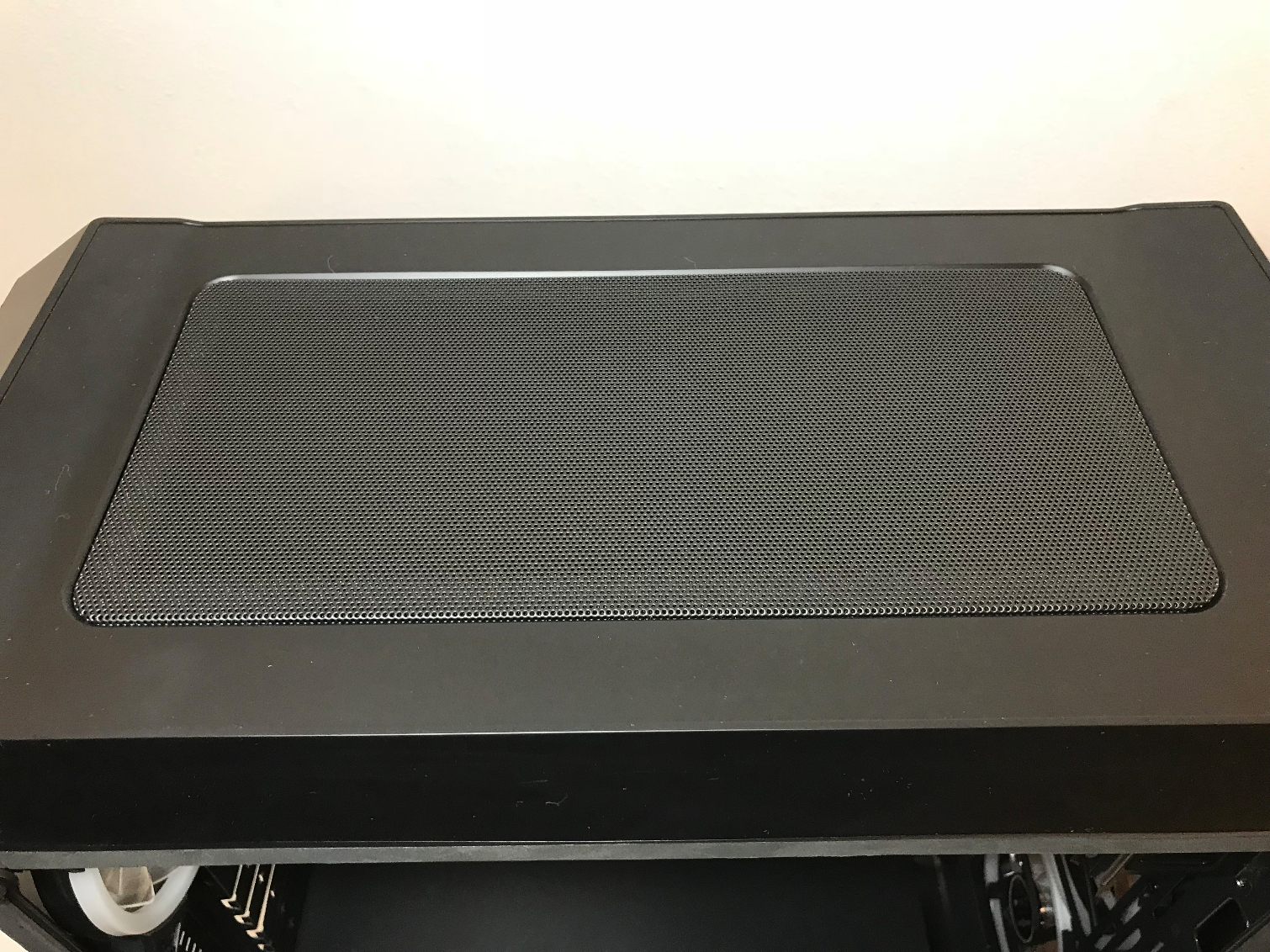
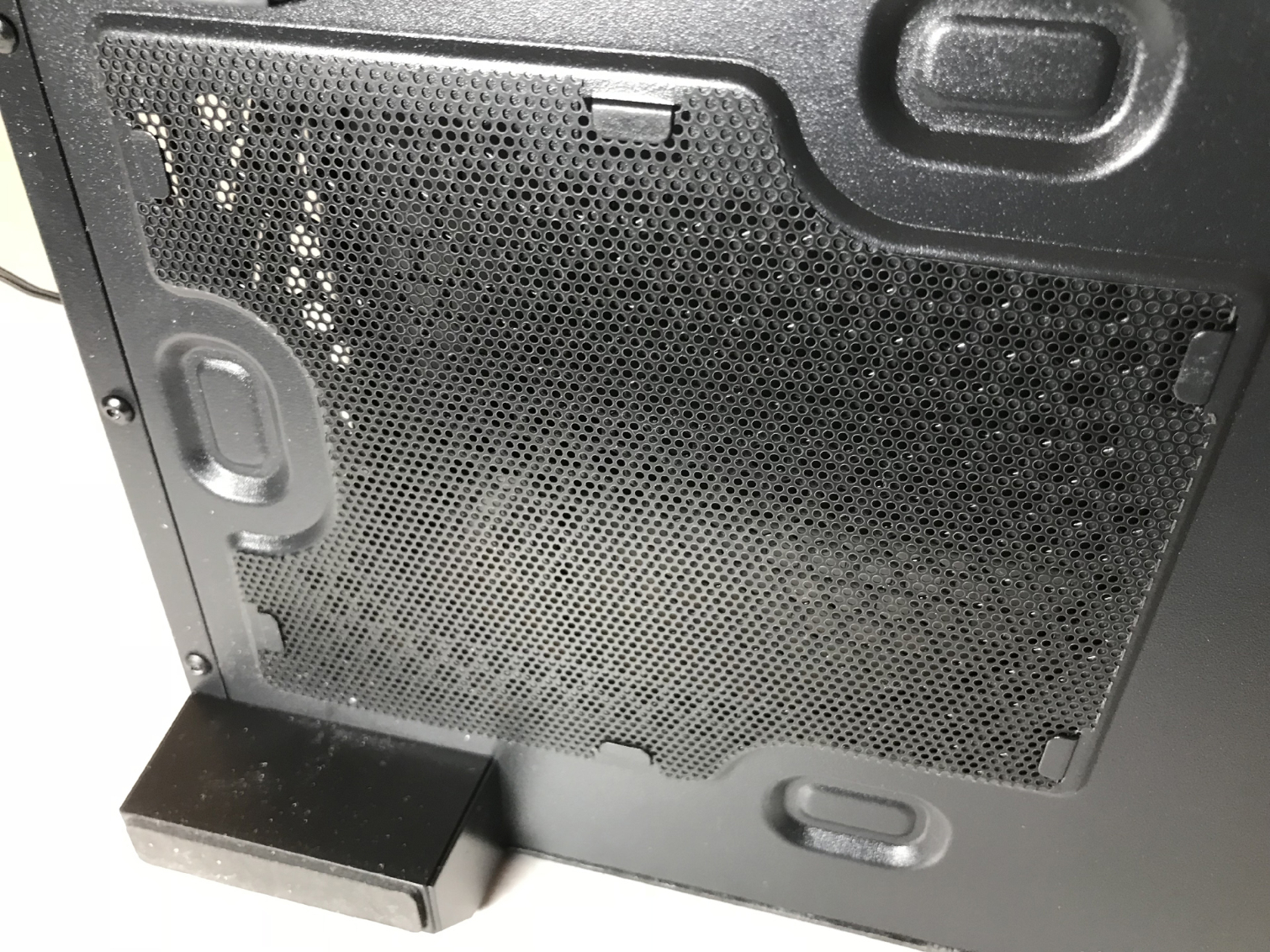
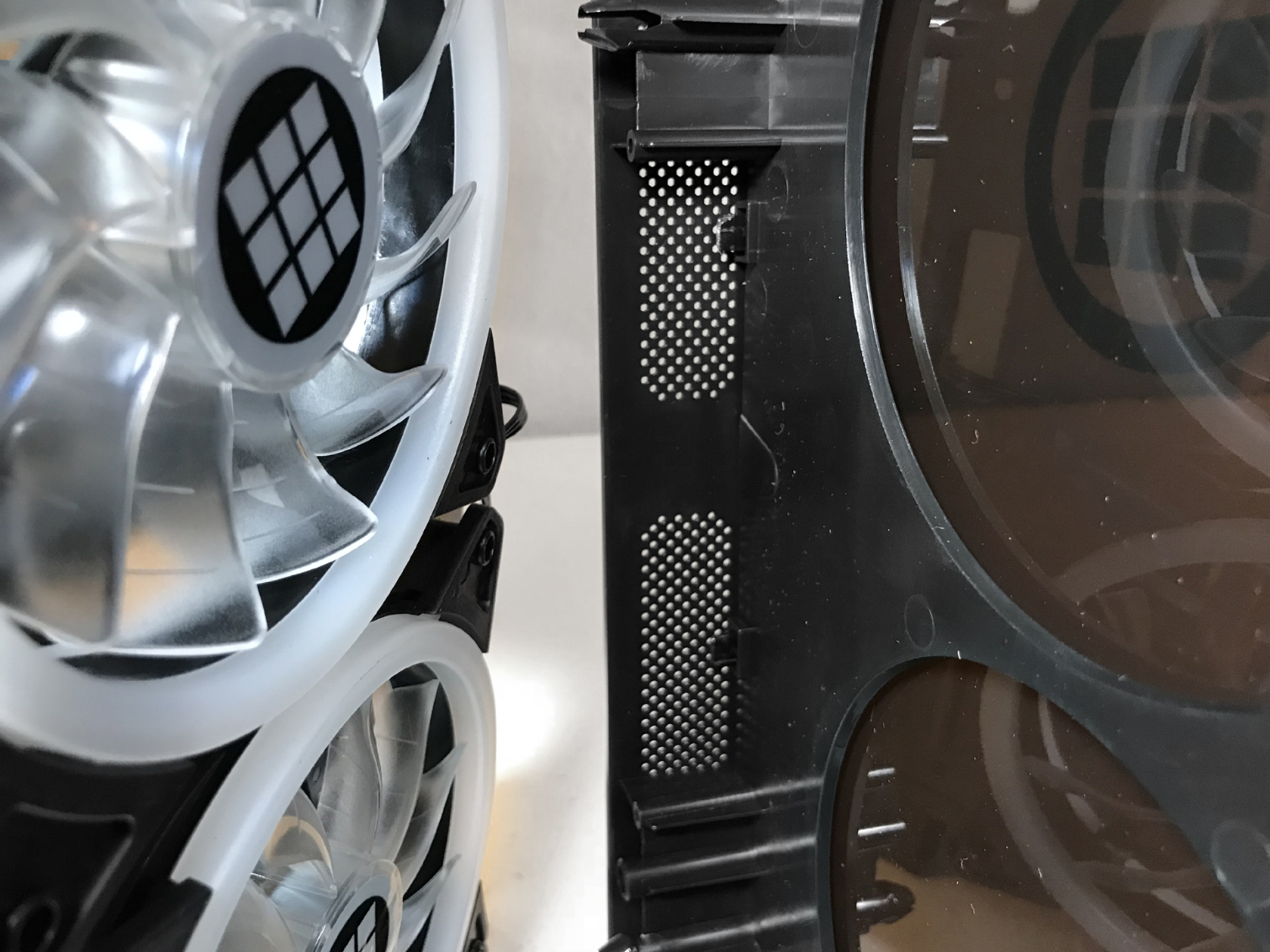
MORE: Best Cases
MORE: All Case Content
Steven Lynch is a contributor for Tom’s Hardware, primarily covering case reviews and news.
